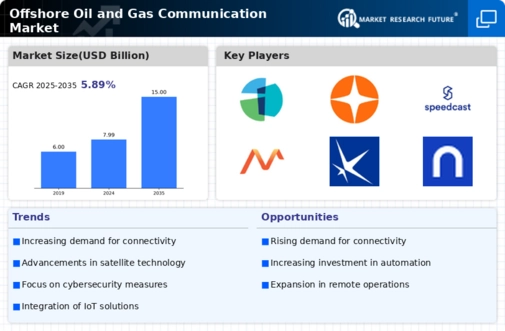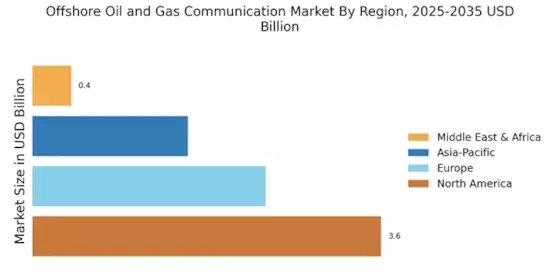Focus on Safety and Risk Management
Safety remains a critical concern in the Offshore Oil and Gas Communication Market, driving investments in communication solutions that enhance risk management. The offshore sector is inherently hazardous, and effective communication is vital for ensuring the safety of personnel and equipment. Companies are increasingly adopting advanced communication technologies to facilitate emergency response and crisis management. The market is expected to see a surge in demand for communication systems that provide redundancy and resilience, ensuring continuous operation even in adverse conditions. This focus on safety not only protects human life but also minimizes financial losses associated with accidents and operational disruptions.
Integration of Advanced Technologies
The Offshore Oil and Gas Communication Market is witnessing a significant integration of advanced technologies such as satellite communication, IoT, and AI-driven analytics. These technologies enhance the capabilities of communication systems, enabling better monitoring and control of offshore operations. For instance, the adoption of IoT devices allows for real-time data collection and analysis, which can lead to improved decision-making processes. Furthermore, the implementation of AI in communication systems can optimize network performance and reduce downtime. As a result, companies are increasingly investing in these technologies to ensure efficient and reliable communication, which is essential for maintaining operational integrity in challenging offshore environments.
Growing Investment in Offshore Exploration
The Offshore Oil and Gas Communication Market is poised for growth due to increasing investments in offshore exploration and production activities. As energy demands rise, companies are expanding their operations into untapped offshore reserves, necessitating advanced communication systems to support these endeavors. The International Energy Agency has indicated that offshore oil production is expected to rise, leading to a corresponding increase in the need for effective communication solutions. This trend suggests that the offshore communication market will benefit from the influx of capital directed towards exploration projects, further driving innovation and technological advancements in communication systems.
Regulatory Pressures and Compliance Requirements
The Offshore Oil and Gas Communication Market is influenced by stringent regulatory pressures and compliance requirements imposed by various governing bodies. These regulations often mandate the implementation of specific communication protocols to ensure safety and environmental protection. Companies operating in offshore environments must adhere to these regulations, which can drive the adoption of advanced communication technologies. Compliance with these standards not only mitigates legal risks but also enhances the overall operational efficiency of offshore operations. As regulatory frameworks continue to evolve, the demand for compliant communication solutions is likely to increase, shaping the future landscape of the offshore communication market.
Increased Demand for Reliable Communication Systems
The Offshore Oil and Gas Communication Market experiences heightened demand for reliable communication systems due to the growing complexity of offshore operations. As exploration and production activities expand into deeper waters, the need for robust communication networks becomes paramount. This demand is driven by the necessity for real-time data transmission, which is critical for operational efficiency and safety. According to industry reports, the market for offshore communication systems is projected to grow at a compound annual growth rate of approximately 6.5% over the next five years. This growth is indicative of the industry's recognition of the importance of seamless communication in mitigating risks and enhancing productivity in offshore environments.


















Leave a Comment